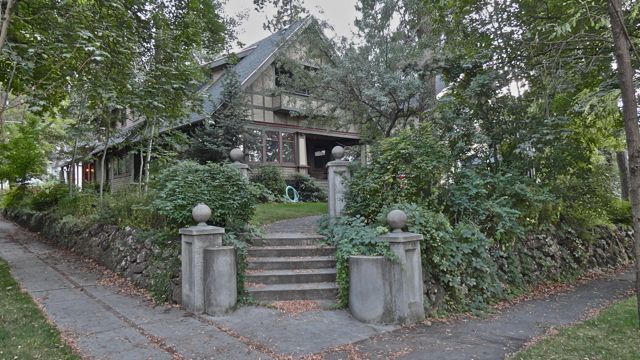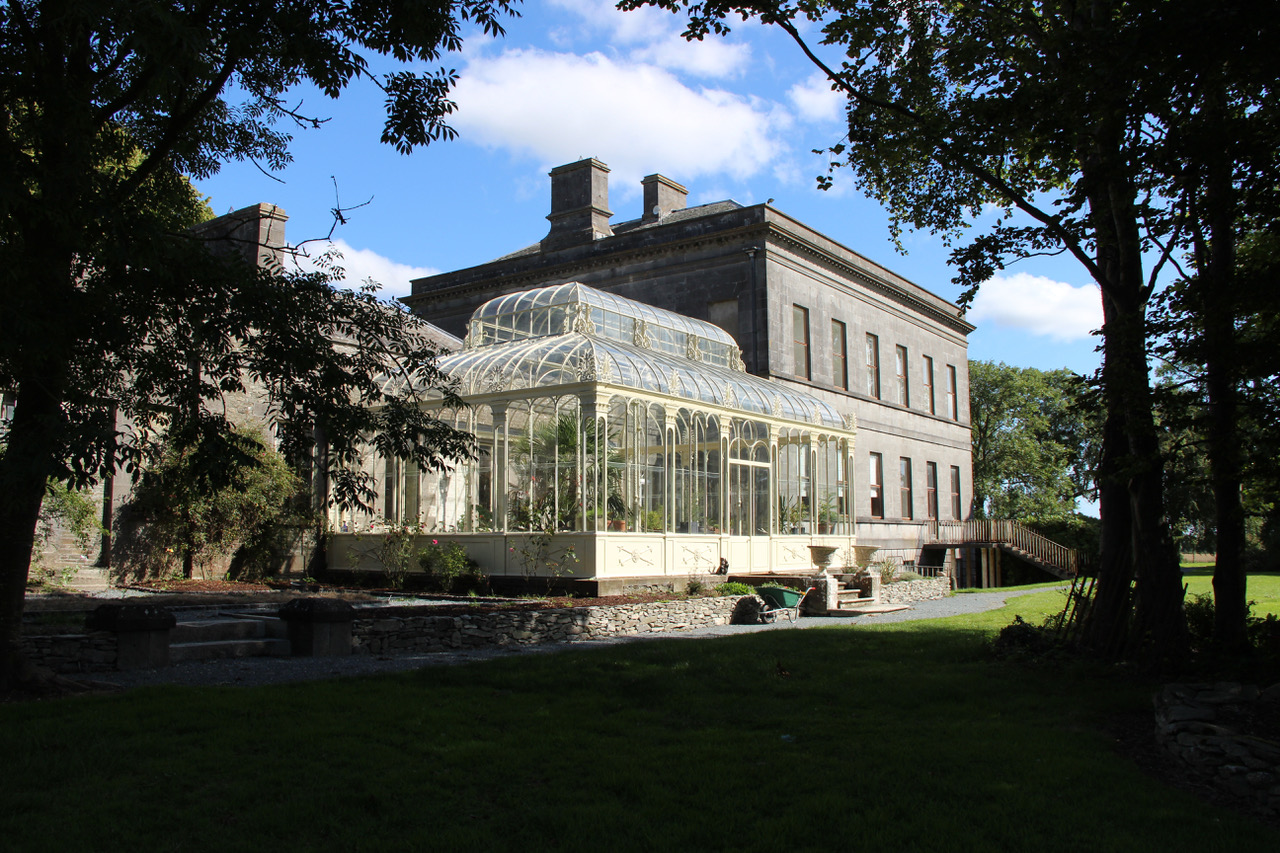Dry-stack walls on the DSP&P
12



12
|
I volunteer as a gandy dancer around the Como roundhouse while living in Arapahoe County. I get to view a beautiful dry-stack wall on the north side of Kenosha Pass above Webster, as I drive home from Como, which piqued my interest. Who built it? How did they build it so well that 140 years later it is intact, functional and beautiful? The Denver and South Park Construction and Land Co. built the road, and equipped it, but did they hire the “wallers” or was it on-the-job training? I've got questions. Lots of Qs. Is there an expert on this forum on dry-stack walls?
JW Stephens, Littleton
Como gandy dancer, ex-news producer, happily married cat keeper
|
Re: Dry-stack walls on the DSP&P
|
Got any pictures of it?
|
|
Lots of dry-stack walls
Como gandy dancer, ex-news producer, happily married cat keeper
|
Re: Dry-stack walls on the DSP&P
|
Wow! Great pictures. Thanks.
|
|
I do a lot of historic preservation work, including stone foundations and walls.
What are your questions ? One of my projects:  This one took three years to quarry the lichen-covered rocks and set them. The 1908 steps were broken and crumbled. Originally the lawn sloped to the sidewalk, so the curved retaining walls, columns and balls were a new idea. The whole premise of the work was to make it look like it had been there since the house was built.
"Duty above all else except Honor"
|
|
We put in dry stone walls around our conservatory (which also previously sloped down like SouthPark’s example). It’s surprisingly easy: neither of us had ever done it before.
The steps immediately to the right of the wheelbarrow are original, while the steps to the far left in the picture are reclaimed stonework from other buildings.

|
|
In reply to this post by ke0azq
I have never come across who constructed the grade, I have found odd references to individuals who were mentioned in newspaper reports involving crimes as having worked for the Railroad, one guy who was beaten up and robbed in Como was working on Boreas Pass.
My impression was that the work was contracted out. The Roundhouse was for example said to be built by Italian Stonemasons, now I have found nothing from the period that mentions Italians and I have no idea where this came from, could be true who knows. The Roundhouse was originally due to be brick, begs the question why they switched, was there a shortage of bricks or bricklayers but there were stonemasons? Dry stone walls are common in some areas as a agricultural fencing. |
|
Dry set masonry is generally preferred when water/drainage/hydraulics
are a location factor. With a sound base and consideration for surface flows and erosion, the dry set stone allows free flow of below/at grade water, with no adverse effect to the structure. Fitting and cutting of stone is a real finesse art, especially when using large stone with minimal gapping.
"Duty above all else except Honor"
|
Re: Dry-stack walls on the DSP&P
|
What about the Stone Garage?Parts of it are still standing.
|
|
In reply to this post by ComoDepot
Poor states that the Denver and South Park Construction and Land Company constructed and equipped the road starting at Platte Canyon as successors to the San Juan Co, taking over the contract from the DSP&P, so we know who the contractor is. Were subcontracts even a thing in 1879? I guess that in that period more people knew more about rocks (prospectors, geologists, speculators, ...) in the Rockies than people need to know today. My speculation is that the hiring boss had word from the grading boss that he could use a couple of crews of wallers in a couple of weeks and what the hiring boss couldn't hire he made up with fast apprentices. These were still fairly cash strapped years in the mountains, weren't they?
JW Stephens
Como gandy dancer, ex-news producer, happily married cat keeper
|
|
In reply to this post by South Park
Essential to hydraulic performance of a dry-stack wall is backfill with heartings, which compare to ballast. Oh no. The DSP&P did not use ballast at Como, or on Boreas Pass. Luckily, the stacks at The Palisades had all the heartings they needed thanks to the Alpine Tunnel. [Thanks to John Meixel]
So this wall and this wall don't look a lot alike but they were within a milepost of each other. Why so different?
Como gandy dancer, ex-news producer, happily married cat keeper
|
|
In reply to this post by Robert McFarland
I'd like to check it out. I think that for habitable buildings they wanted mortar to keep out the elements, especially where it got damm cold.
This one is a dry-stack cellar near the Sherrod Loop. Doesn't get windy in the basement.
Como gandy dancer, ex-news producer, happily married cat keeper
|
|
In reply to this post by South Park
This is the tragic fail at The Palisades and why it will cost so much to repair properly. It's companions include Woodstock and locating a mountain route on the north-facing side of the valleys. Seems like the successful people back then did not let common sense stop them from executing their vision. The previous statement also applies to another of "Evans' Follies." <<20/20 hindsight
Como gandy dancer, ex-news producer, happily married cat keeper
|
|
Great cellar picture, JW! Any idea if the cover building was frame or log? (Or are they like an ice-house where they're just mounded over with dirt?)
|
None. Just beyond there, though, there is a dry-laid stone culvert exposed by flooding (maybe the same time the Palisade wall was biffed?) on the fork of Quartz Creek.
Como gandy dancer, ex-news producer, happily married cat keeper
|
|
In reply to this post by Jeff Young
Beautiful work. They say that once you get the feel of rock it gets easier and goes faster. Is that true?
Each new addition centers on the two below it. Leave no joints aligned, and watch out for zippers. Big rocks at the bottom, little rocks on top, but a coping stone to rule all. More friction, more better. Take and inch or two of batter if you can get it. If you come across some outcrops that look like springers, build a compression arch and compress it. Build your wall in 3-D even if you only have enough room for facing (not cribbing) by using through stones to brace on bedrock. Seems like those would be the rules and the examination would be a quick one.
Como gandy dancer, ex-news producer, happily married cat keeper
|
|
In reply to this post by South Park
Nice as well. Some of my Qs are already posted but there are others. Most coping stones look like they were quarried, not found. Any way of IDing the quarry other than invoices? I see some stones that look like they were face-trimmed and then there is the Palisade wall. Most of the walls seem to show different levels of skill and art. How big a pool of wallers would they need to build the Kenosha Pass walls in 30 days? Seems like a simple skill that could be done with OJT. It was the D&SP Land and Construction Co that built them; do we know if their paybooks are extant? The walls in Quartz Creek are a big deal; did anyone who worked on them write an article or book?
Como gandy dancer, ex-news producer, happily married cat keeper
|
|
In reply to this post by ke0azq
My experience is that you flounder for the first half day, and then it goes really quickly. The parts visible in the picture were laid in about 3 days. (Not including the steps, which were a couple of days by themselves.)
We should have put bigger coping stones on the top, though. The top sometimes gets disturbed when the flower beds are weeded. (Great thing about dry stone walls, though, is that they're easy to repair. Just re-stack.) |
|
Yup. Big coping stones on a good base keep things in place. So it would be nice to get the Gunnison NFS to source and replace missing coping on the walls around the Palisade, as preservation, before they restore the, um, divot.
Como gandy dancer, ex-news producer, happily married cat keeper
|
|
In reply to this post by ke0azq
There were 2 main construction companies mentioned, the way I read it the above was responsible for the first 150 mile section and then the Denver and South Park Railroad Construction Company took over. I had also read and forget where that this was a common way for the early investors to make their money no matter what happened, essentially the returns from construction covered their investment. I cannot prove it just my impression was that these Construction companies did not employ the labourers etc that would have built the grade. If we want to go back further there were several predecessors: Denver Railway Association Denver Railway and Enterprise Company (- Morrison branch) Denver and San Juan Railroad Railroad Construction Company In 1875 they were dividing the line up here Buffalo Creek to Halls Gulch to Fairplay to Salt Works to the mouth of Trout Creek. |
«
Return to C&Sng Discussion Forum
|
1 view|%1 views
| Free forum by Nabble | Edit this page |


